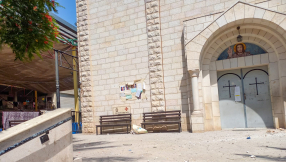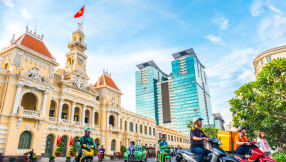Battersea Power Station offered facelift
The scheme would include more than 3,200 homes and an office campus covered by an "Eco-Dome" topped by a 300-metre (1,000ft) tower and a flue that would offer sun-powered natural ventilation, Irish-owned Real Estate Opportunities said.
But local campaigners who fear for the future of the 1930s art deco building said the plans were a "fantasy project" that would never be realised.
The brick-clad power hall with its four white chimneys on the Thames's south bank, 1.5 miles west of the Houses of Parliament, is one of London's most recognisable icons.
It featured on the cover of a Pink Floyd album - with an inflatable pink pig floating between its chimneys - and is much-loved by local residents.
But the building and its 38-acre site have fallen into disrepair since its power turbines ceased turning in 1983.
Since then a series of proposed redevelopments have been abandoned, including a Disney-style theme park and a conference centre.
In the process the building has lost its roof and one wall and the owners, who bought the site for 400 million pounds in 2006, say they are spending 2 million pounds a year just to prevent its complete collapse.
Keith Garner, an architect with the Battersea Power Station Community Group, questioned the developer's motives.
"I think they are more interested in the value of the land and getting rid of the building," he said.
But a spokesman for the owner's development company, Treasury Holdings, insisted the power station building was safe in its hands.
"We believe that the power station is an asset, and bringing it back into life as a source of energy production, as we are going to do, is an absolutely essential component of the scheme," he said.
Under the plans, the developers would spend 150 million pounds restoring the building with a hotel, housing and shops as well as installing a new generator powered by biofuels, waste or other renewable sources.
Beside it would sit a large glass-cladded shopping, housing and office complex, as well as a six-acre public park.
Construction would start in 2012 and be completed by 2020.
But the scheme faces a number of obstacles, not least obtaining planning permission, including from London Mayor Boris Johnson, which could take up to three years.
The scheme also envisages an extension of the underground rail network to the site - a proposal the capital's transport authority has already rejected.













